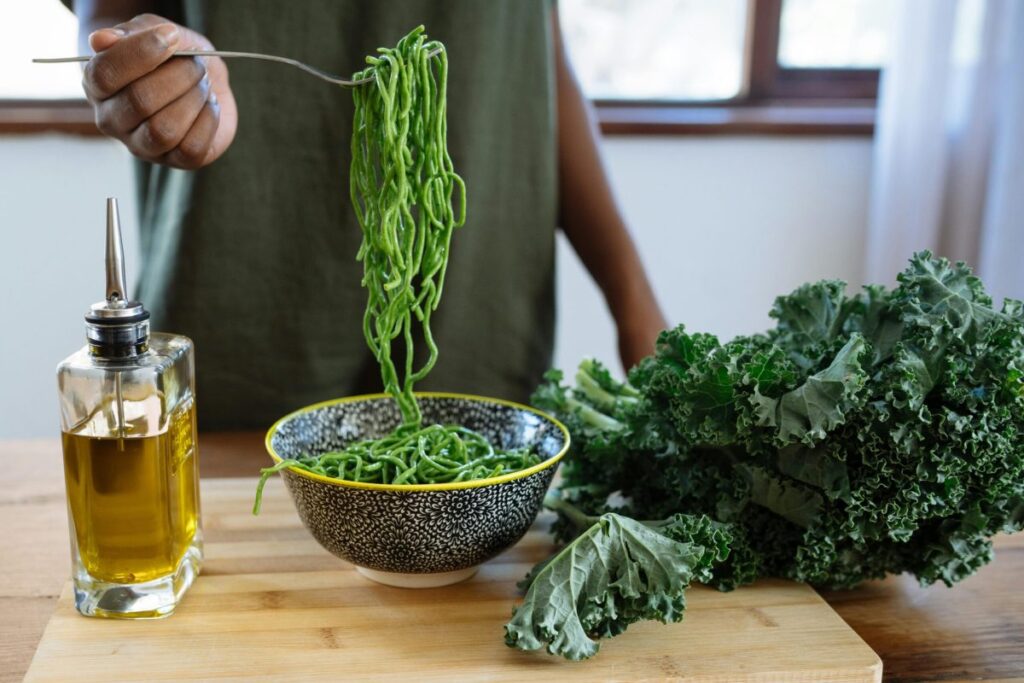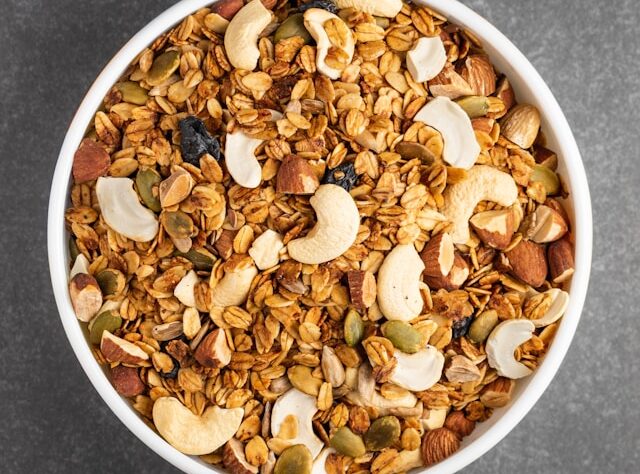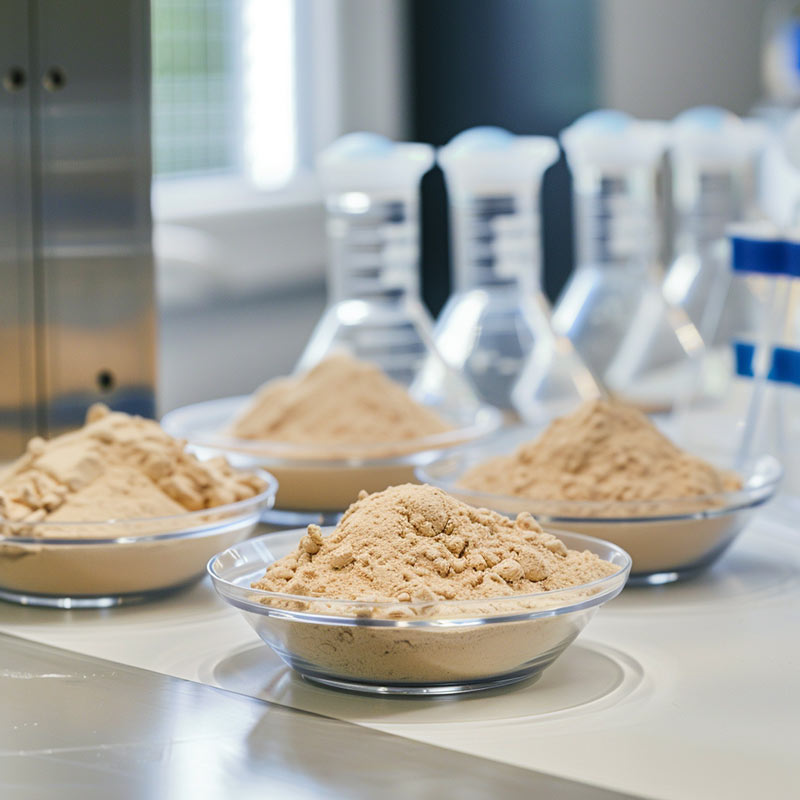Kale as a Superfood: Health Booster or Marketing Hype? A Scientific Analysis
Change block type or style
Kale as a superfood is praised for its high nutrient density and health benefits, but is it truly unique? This article explores the science behind kale as a superfood, separating fact from marketing hype.

Introduction: Is Kale Truly a Superfood?
Modern nutrition is no longer just about sustenance; Rather, it is shifting towards a more health-conscious and preventive approach. As a result, consumers are becoming increasingly aware that food does more than simply satisfy hunger. In fact, it also plays a crucial role in disease prevention and overall well-being. Consequently, this growing awareness is particularly reflected in the rising popularity of functional foods—nutrient-rich options with scientifically documented health benefits.
One prominent example is kale as a superfood , a variety of Brassica oleracea belonging to the cruciferous vegetable family. Its high nutrient density and abundance of bioactive compounds have positioned it as a leading “superfood.” However, the critical question remains: Is kale a uniquely powerful health booster, or is its status largely a result of strategic marketing?
- This article systematically examines: The traditional and contemporary uses of kale
- Its nutrient composition and associated health benefits
- Scientific evidence regarding its bioactive compounds
- The concept of “superfoods”—scientific fact or marketing construct?
1. Traditional and Modern Uses of Kale as a Superfood
Kale has been cultivated and consumed for centuries across Europe, Asia, and North America , valued for both its nutritional properties and medicinal applications ( Balkaya & Yanmaz, 2005; Velasco et al., 2007 ). Historically, it was grown on small-scale farms, serving as both a staple food and a fodder crop .
With the increasing emphasis on plant-based nutrition and health-oriented diets , kale has experienced a resurgence in popularity, particularly in the United States , where its cultivation expanded by over 50% between 2007 and 2012 (USDA, 2012).
Culinary Applications Across Different Cultures
Kale is integrated into various culinary traditions worldwide:
- Europe: Commonly prepared as a cooked dish, often paired with smoked meats or sausages (e.g., Germany, Scandinavia, Netherlands).
- Asia: Frequently included in stir-fried dishes and soups, enhanced with garlic and soy sauce.
- United States: Popular in salads, smoothies, and baked kale chips, particularly within the clean eating movement.
Beyond its leaves, kale seeds also have practical applications, as they are used as oil additives in bread and other baked goods (Ayaz et al., 2006). Furthermore, kale juice has gained popularity in detox regimens, reflecting its growing role in health-conscious diets. Notably, recent studies suggest that fermented kale juice may offer probiotic benefits (Kim, 2017). Nevertheless, further research is necessary to evaluate both its acceptability and efficacy comprehensively.

2. Nutritional Profile: Why Is Kale as a Superfood Considered Beneficial?
Kale is recognized for its exceptional nutrient density, offering an array of essential macronutrients and micronutrients per 100 grams:
| Nutrient | Amount | Physiological Benefit |
|---|---|---|
| Calories | 49 kcal | Low energy density, promotes satiety |
| Protein | 4.3 g | High-quality plant-based protein |
| Dietary Fiber | 3.6 g | Supports digestive health and gut microbiota |
| Vitamin C | 120 mg | Antioxidant properties, immune function |
| Vitamin K | 705 µg | Essential for blood coagulation and bone metabolism |
| Vitamin A (β-Carotene) | 500 µg | Supports vision and skin health |
| Calcium | 150 mg | Contributes to bone density and dental health |
| Iron | 1.5 mg | Facilitates oxygen transport in the blood |
Young vs. Mature Leaves: Nutritional Differences
The nutritional profile of kale leaves varies with maturity:
Young Kale (Baby Kale):
- Higher concentrations of Vitamin C and flavonoids
- Milder taste, suitable for raw consumption (salads, smoothies)
Mature Kale Leaves:
- Greater levels of calcium and fiber
- Slightly bitter taste, ideal for cooked dishes (soups, stir-fries)
💡 Recommendation: Incorporating both young and mature leaves can optimize nutritional intake.
3. Bioactive Compounds: The Functional Benefits of Kale
Beyond its macronutrient and micronutrient composition, kale contains numerous bioactive compounds that contribute to its potential health benefits:
- Glucosinolates & Sulforaphane: Linked to cancer-preventive mechanisms through detoxification pathways.
- Polyphenols (Kaempferol & Quercetin): Demonstrate anti-inflammatory and antioxidant properties, potentially reducing oxidative stress.
- Carotenoids (Lutein & Zeaxanthin): Play a crucial role in eye health , protecting against macular degeneration.
- Sulfur Compounds: Assist in liver detoxification and metabolic regulation.
📌 Conclusion: The presence of these bioactive compounds reinforces kale’s potential as a health-promoting food , but further research is required to determine their long-term effects.
💡 Want to learn more about bioactive substances? Then check out our Know How section to read about the polyphenols in goji berries!

4. Is Kale Truly a Superfood? Examining the Scientific Perspective
The term “superfood” lacks an official scientific definition and is primarily a marketing designation. While kale is undoubtedly nutrient-rich, many other cruciferous vegetables possess comparable or superior nutritional attributes.
Comparison: Kale vs. Other Cruciferous Vegetables
| Nutrient (per 100g) | Kale | Broccoli | Brussels Sprouts |
|---|---|---|---|
| Vitamin C | 120 mg | 89 mg | 85 mg |
| Vitamin K | 705 µg | 102 µg | 177 µg |
| Glucosinolates | High | Very High | Very High |
📌 Key Insight: While kale as a superfood is a valuable addition to a healthy diet , it does not surpass other cruciferous vegetables in terms of overall nutritional value.
Final Verdict: Nutrient Dense, but Not Unique
✔ Yes, kale is an excellent source of essential vitamins, minerals, and bioactive compounds.
❌ No, it is not the only “superfood” nor significantly superior to other cruciferous vegetables.
💡 Optimal dietary strategy: A diverse, balanced diet incorporating a variety of nutrient-dense foods is the most effective approach to long-term health.
While kale as a superfood remains a beneficial dietary choice, its hyped status should be viewed with a critical perspective . Incorporating a range of cruciferous vegetables—including broccoli, Brussels sprouts, and cabbage —ensures a more comprehensive intake of essential nutrients and health-promoting compounds .
Would you like recommendations on how to incorporate kale into your diet ? Feel free to reach out for evidence-based nutrition insights .
Reference
- Šamec, D., Urlić, B., & Salopek-Sondi, B. (2019). Kale ( Brassica oleracea var. acephala ) as a superfood: Review of the scientific evidence behind the statement. Critical Reviews in Food Science and Nutrition, 59 (15), 2411–2422. https://doi.org/10.1080/10408398.2018.1454400

